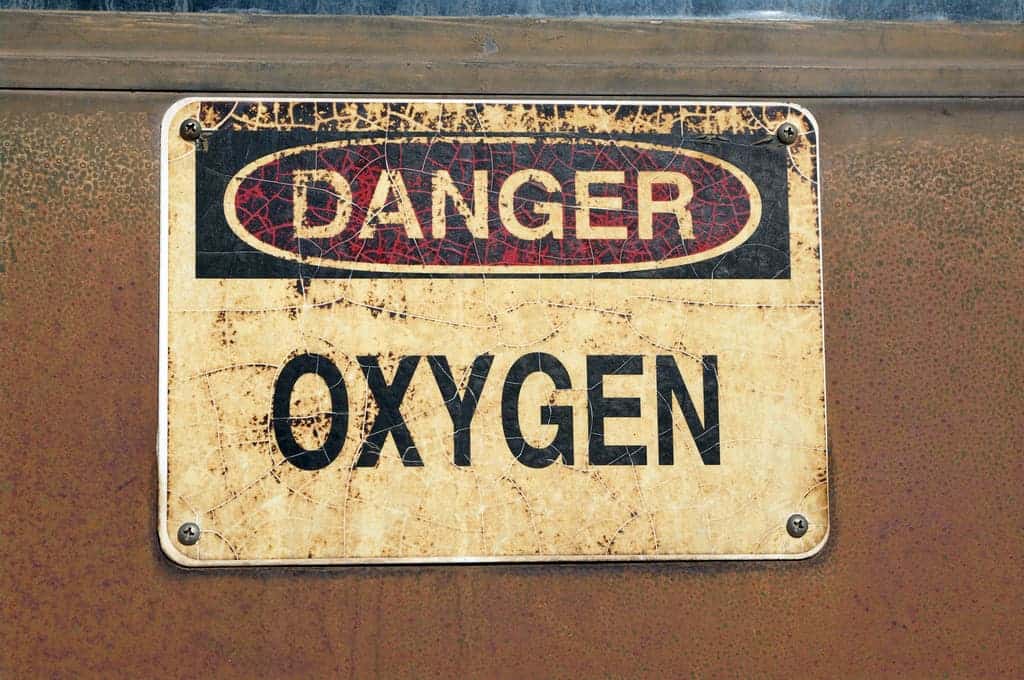Lack of atmospheric oxygen in any meaningful concentrations has bottlenecked evolution for 2 billion years on Earth, even as the biosphere was emitting large quantities of the gas. A new paper from the University of Exeter’s Geography department explores how the biosphere both produced and kept tabs on the oxygen in the atmosphere during this time.

As far as chemical elements go, oxygen is ridiculously reactive. Bad news if you’re a rusty old car, awesome news if you need to breathe. This gas has allowed an incredible leap in the quantity of energy biological systems have at their disposal, shaping life into what we know today. But for a large span of Earth’s history, life didn’t rely on oxygen.
The best environmental disaster ever
We believe that the earliest bacteria started squiggling about some 3.8 billion years ago, and for a long time, they had a merry life as the oceans’ only colonists. They relied on other chemical processes for energy and if anything, oxygen’s tendency to bind left and right made it quite hazardous for these bugs.
Some 2.7 billion years ago, the first photosynthesizers started popping up and with them, oxygen levels in the atmosphere started to increase. This created the Great Oxidation, a steady build-up of oxygen in the atmosphere 2,4 billion years ago. Which at the time was a pretty horrific event, as early life wasn’t adapted to living with oxygen — it made organisms rust, so to speak.
Still, for such a dramatic name, oxygen levels remained much lower than what we see today. Complex life — which largely draws its energy from oxygen — only appeared 600 million years ago with sponges and jellyfish. It didn’t really catch on until plants emerged some 470 million years ago because atmospheric oxygen levels remained low up to that point. In essence, there wasn’t enough free oxygen despite the steady supply from cyanobacteria and early algae.
So there was something in the environment keeping this (at the time) largely toxic gas in check. Inorganic processes can account for this — for example oceans absorbing the gas or chemical weathering (the process in which rocks react with chemical elements around them.)
But Professor Tim Lenton and Dr Stuart Daines of the University of Exeter Geography department believe that the biosphere had a part to play, too. The duo has created a computer model which shows why the Great Oxidation didn’t initially result in modern levels of the gas.
Bring out your dead
According to their research, dead biomass acted as one of the biggest oxygen sinks. The bodies of simple lifeforms had a lot of time to accumulate in sedimentary formations before oxygen levels rose. After the Great Oxidation, tectonic movements pushed these layers back to the surface where they reacted with oxygen — a kind of organic weathering.
After the oceans and inorganic rocks had their fill of oxygen, the organic layers created a regulatory feedback loop. The more oxygen in the atmosphere, the faster it would react with this matter. It captured most of the gas when first exposed. After that, organic matter and oxygen largely kept each other in check, being produced and consumed at the same rate.
The model estimates atmospheric oxygen levels between 1% and 10% of today’s levels in the two billion years after the Great Oxidation Event.
“This time in Earth’s history was a bit of a catch-22 situation. It wasn’t possible to evolve complex life forms because there was not enough oxygen in the atmosphere, and there wasn’t enough oxygen because complex plants hadn’t evolved — It was only when land plants came about did we see a more significant rise in atmospheric oxygen,” Professor Lenton said.
Plants tipped this fragile balance in the favor of oxygen. Their advent would double the total photosynthesis in use, emitting more gas than weathering could absorb. Concentrations rose to the levels we see today and animals moved to land where there was now ample oxygen to breathe.
“The history of life on Earth is closely intertwined with the physical and chemical mechanisms of our planet. It is clear that life has had a profound role in creating the world we are used to, and the planet has similarly affected the trajectory of life.”
“I think it’s important people acknowledge the miracle of their own existence and recognise what an amazing planet this is,” he concluded.
The full paper “Atmospheric oxygen regulation at low Proterozoic levels by incomplete oxidative weathering of sedimentary organic carbon” has been published in the journal Nature Communications.


